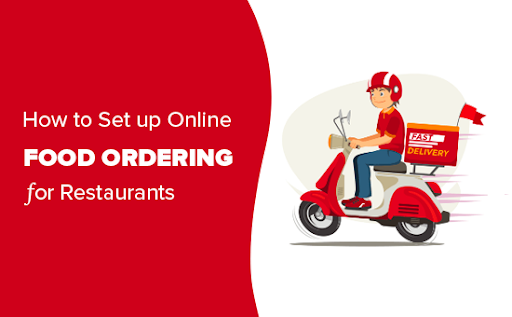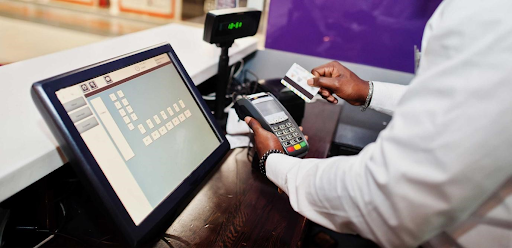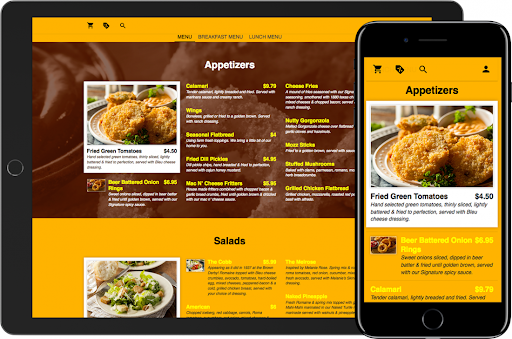How to Set up Online Ordering for Your Restaurant

A big shoutout to all the new restaurateurs! Are you tired of managing endless phone orders and customers walking in to place them? In today’s fast-paced world, people prefer to order food online and have it delivered to their doorstep. Setting up online ordering for your restaurant can be a game changer, allowing you to expand your customer base and increase your revenue.
So whether you are a small restaurant owner or part of a larger chain, it's time to embrace the digital age and learn how to set up online ordering for your restaurant. Get ready to streamline your operations and serve delicious meals to your customers with just a few clicks!
Navigating the various options available in the market can be challenging and confusing. To help you identify and launch the most suitable online ordering system for your restaurant, here is a list of seven important steps you must follow.
Look at your options
Different online ordering options are available to consider before you settle on the most appropriate one. These belong to three categories- online ordering through the first party, online ordering through a third party, and third-party delivery. Let's look at them in detail.
First-party online ordering
First-party services will provide integrated online ordering systems that can be customized to fit your restaurant’s needs. These systems allow for branding, menu customization, email marketing, and loyalty programs to maximize customer data collection.
With a flat monthly fee and no commissions, restaurants using first-party systems can save 15-30% compared to those using third-party services. Both takeout and delivery options are available, with curbside pickup and scheduled ordering for takeout and either first-party delivery or partnership with a delivery company.
Overall, first-party systems provide flexibility in logistics and profit retention with a commission-free model.
Third-party online ordering
Customizable online ordering systems are available for a flat monthly fee, and they integrate with specific POS systems to facilitate online ordering. They also collect guest data similar to first-party systems. However, if the system doesn't integrate with a restaurant's POS, order management can become more labor-intensive, and access to guest data can become more limited. Takeout options are typically the same as first-party systems, and for delivery, the third-party provider will offer their network of drivers with rates varying by the partner.
Third-party delivery
Third-party delivery services feature restaurants on their platform alongside other establishments in the area. These services are primarily accessed through mobile apps and web browsers, with limited customizability and access to customer data. However, they can offer a boost in demand due to their wide customer base.
The downside is that the commission fees can be as high as 30%, significantly impacting your profits as orders increase. Another important consideration is that customers cannot use restaurant-specific gift cards on third-party platforms.
Do Some Research
To further enhance the online ordering system for your restaurant, research which systems your neighboring restaurants are using and how customers in your community prefer to order. This is of particular importance when you use a third-party delivery platform.
Choosing a system with a strong local presence will help you attract more customers and gain visibility in the community. However, it is worth noting that third-party platforms have high rates and commissions, and its recommended to seek advice from other restaurant owners on whether the benefits of these services justify the cost.
Obtain demos of the different systems
After researching the available options, set up demos for the online ordering systems that you feel would fit your restaurant. During these demos, ask questions about important differentiating factors. Focus on commission fees and monthly rates, POS system integration, data collection, branding, and customization, as well as order delivery options.
Additionally, it is beneficial to understand the ordering experience for your customers. Are they being encouraged to shop at local restaurants similar to yours? Is the user experience easy to navigate or cumbersome? If there is a problem with the order, who handles it? These factors can be decisive.
Ensure your system is POS integrated

Having an integrated online ordering system with your point of sale (POS) is crucial for an efficient and accurate online ordering process. With integration, orders made through the online platform are directly sent to the kitchen display system for processing and execution. This eliminates manual inputting and potential human errors. Without integration, restaurant staff must manually input orders from the online provider’s tablet, leading to delays and inaccuracies.
Furthermore, integration allows for the collection of guest data, which can be utilized for marketing tools like email marketing, loyalty programming, and trend reporting.
Do the Onboarding
Once you have chosen your online ordering system, your next step is to complete the onboarding process. This typically involves working with the provider to set up and configure your online ordering platform and receiving guidance on best practices and other helpful tips.
If your chosen system offers customization options, take advantage of them to showcase your restaurant brand through images, messaging, and colors. If the system is already integrated with your POS, the activation process for online ordering should be pretty straightforward.
It is important to carefully follow the step-by-step guide provided by the provider to launch your system and contact their customer support team if you encounter any issues or face any difficulties while onboarding.
Build the menu and test it

To ensure a great off-premise dining experience, it is important to tailor your menu accordingly. Consider which items may not travel well and how to modify them to make them more suitable for takeout. Also, determine the best way to package your dishes to keep them fresh upon delivery. You may also need to adjust your prices to cover any additional costs associated with online ordering.
To get inspiration for your online menu, look at other restaurants you know well and see how they present their dishes on online platforms. This will help you to create an excellent menu that will be a hit with customers and ensure a great dining experience.
Start taking orders
You can now start accepting orders through your new online ordering system. As with any new technology, addressing any issues with menu items, logistics, and order times may take some time. Stay aware of both staff and guest feedback to improve the dining experience. Many online ordering systems offer order throttling features to manage peak times. To reduce obstacles in the future, take the time to establish best practices with your restaurant staff early on.
To promote your restaurant, you can use a variety of marketing tactics, like sending emails with the ordering link, sharing the link on social media and your website, and including flyers in the go-to bags. These strategies will help you to increase your online ordering traffic. If your restaurant receives a lot of call-in orders, consider adding a recording that will encourage guests to take advantage of your online ordering system instead for a more streamlined experience.
Conclusion
Implementing online ordering for your restaurant with apps such as OrderEm can have numerous benefits, including increased sales, improved efficiency, and an expanded reach to potential customers. However, it requires careful consideration and planning, from selecting the right menu to optimizing it for off-premise dining. With the right approach, online ordering for your restaurant can be an invaluable tool for enhancing the success and popularity of your restaurant.